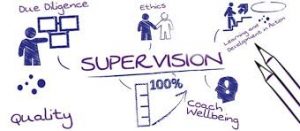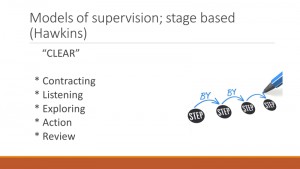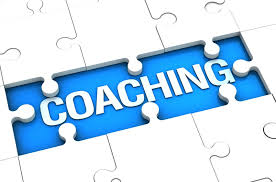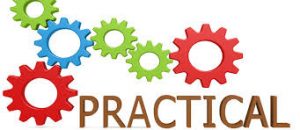Why Coaching supervision?
 With the continued growth in Coaching over the last decade, regular supervision of Coaches is becoming increasingly important. There are a wide variety of people training as Coaches and indeed some calling themselves Coaches with little experience or training. If we don’t have across the board professional training and ongoing development along with accreditation for Coaches, why would we as a profession look at having regular coaching supervision? After all there is little research showing that supervision improves the quality of coaching.
With the continued growth in Coaching over the last decade, regular supervision of Coaches is becoming increasingly important. There are a wide variety of people training as Coaches and indeed some calling themselves Coaches with little experience or training. If we don’t have across the board professional training and ongoing development along with accreditation for Coaches, why would we as a profession look at having regular coaching supervision? After all there is little research showing that supervision improves the quality of coaching.
My own Coaching Supervisor who is a Master Coach and an accredited Coaching Supervisor who has written books on the subject thinks that as the coaching market matures, coaching supervision will become more and more important for Coaches to support their practice, but also for organisations commissioning coaching supervision who are likely to require evidence of training and accreditation. Her perspective is that “no-one is there in the room as we work with our clients. For me supervision is our opportunity to stay in “conscious competence”… and when we do supervision in groups it accelerates our learning as we support group members in their reflections”. Tatiana Bachkirova at Oxford Brookes University talks about supervision as conscience: that our professional conscience should be the driver for regular reflection of our work; “supervisors are not priests who can help release your professional sins. They are respectful companions in your professional commitment to quality and who you give licence to challenge you.”
I think we could learn lots from other sectors like psychotherapy or social work where supervision (often a mandatory requirement) is embedded into professional practice and seen as crucially important to support the practitioners well-being, the quality of the work they do with clients and the application of ethics and due diligence.
Definitions and functions
Which brings us to what supervision is. There are many different definitions of coaching supervision that encompass elements of reflective practice, the context in which the coach is working and the sharing of expertise. A few of these are:
 “Supervision is a forum where supervisees review and reflect on their work in order to do it better” (Carrol 2007)
“Supervision is a forum where supervisees review and reflect on their work in order to do it better” (Carrol 2007)
“Supervision is the process by which a Coach/Mentor/Consultant with the help of a Supervisor, who is not working directly with the client, can attend to understanding better both the client system and themselves as part of the client-coach/mentor system, and transform their work” (Hawkins and Smith 2007)
“Coaching supervision is a formal process of professional support which ensures continuing development of the coach and effectiveness of his/her coaching practice through interactive reflection, interpretative evaluation and the sharing of expertise” (Bachkirova, Stevens and Willis)
My own working definition of coaching supervision is “the opportunity to reflect on your own coaching practice in a safe space that will support you in your ongoing growth and development as a Coach”
The functions of supervision using Hawkins and Smith are often described as covering 3 different elements:
- Normative: contributing to the quality of work and ethical decision making
- Developmental: facilitating personal and professional development of the Coach
- Restorative: providing emotional support to the Coach
Coaching Supervision models
The “CLEAR” Model
 Probably the most basic model of supervision would be Hawkins “CLEAR” model. This is a straightforward sequential model much like the “GROW” coaching model working from contracting through to action and review. As with the GROW model it has limitations perhaps in its simplicity and lack of perspective that the more complex models have.
Probably the most basic model of supervision would be Hawkins “CLEAR” model. This is a straightforward sequential model much like the “GROW” coaching model working from contracting through to action and review. As with the GROW model it has limitations perhaps in its simplicity and lack of perspective that the more complex models have.
The 7 eyed model of supervision
Of the supervision models around, this is the one that speaks to me as the best all round model the most intuitive, and one that recognises the complexity of many different aspects: “eyes” or differing perspectives that are needed to reflect on work with coaching clients.
 This model includes all the different aspects that can be focused on in supervision and the range of supervisory styles and skills needed for each area of focus. It does not follow a chronological order from 1-7. The table below simply indicates the most common way of moving through the modes.
This model includes all the different aspects that can be focused on in supervision and the range of supervisory styles and skills needed for each area of focus. It does not follow a chronological order from 1-7. The table below simply indicates the most common way of moving through the modes.
It points out the way the systemic context of the coachee can be mirrored in the coaching relationship and how the dynamics of the coaching relationship can be mirrored in the supervisory relationship
Mode 1: Getting the coachee into the room
Mode 2 : The coach’s interventions
Mode 3: Relationship between coach and coachee
Mode 4: The coach’s awareness
Mode 6: Supervisor self-reflection (supervisor’s awareness)
Mode 5: The supervisory relationship
Mode 7: The wider context
So for example in Mode 1, getting the coachee into the room might include questions like…
- What was the client like when they came into the session?
- Replay the first five minutes when you first met this client? What do you notice?
- What comes to mind when you think of this client?
- What did you see/hear/feel during the session?
- What is the coaching contract with this client?
Essentially The seven-eyed model, originally developed by Peter Hawkins and Robin Shohet, is commonly used by supervisors to help the Coach they are working with reflect on the effectiveness of their coaching practice. It can also be helpful to use the 7 eyes/perspectives as a Coach to help on your own internal reflection, especially if you have come out of a session where there have been some challenges, or a feeling that it hasn’t quite worked as well as you had hoped.
A very good You Tube clip is available on how to use the 7 eyed model that is worth a watch.
Seven Coaching conversations
 An alternative approach is another 7 factored model or framework created by David Clutterbuck called “7 coaching conversations”, which looks at both the Coaches and the clients reflections before, during and after the coaching session(s).
An alternative approach is another 7 factored model or framework created by David Clutterbuck called “7 coaching conversations”, which looks at both the Coaches and the clients reflections before, during and after the coaching session(s).
Most coach training focuses on the session itself, rather than before and after reflection and imagining what the clients thoughts would be before and during the session. The effectiveness of the spoken dialogue in the session depends heavily on the other six conversations. The principle of the model is that building our competence in each of the conversations is essential in mastering the coaching role.
Clutterbuck posits that the coaching conversation is actually seven conversations that happen before the session, and during and after the session:
- My dialogue with myself before the session
- The client’s inner dialogue before the session
- My inner dialogue during the conversation
- The spoken dialogue
- The client’s inner dialogue during the conversation
- My reflection after the conversation
- The client’s reflection after the conversation
So for example, some of the questions a Coach Supervisor could ask themselves before the session are:
- How have I helped so far?
- What are my motivations in this relationship?
- What is the “big picture” for this client?
- Do I really understand what drives them?
- What is this client avoiding?
- What am I avoiding?
- How do I feel about this relationship?
- Am I looking forward to this meeting? (If not, what’s the issue and what should I be doing about it?)
Practical approaches to 1-1 and group supervision
In terms of the different approaches to supervision, I would like to refer to my own practice as a Coach in both the 1-1 and group approach to coaching supervision I practice; not I’m keen to say, as a perfect model but an example of the type of support coaching supervision can offer.
 I work with Coaches 1-1 as a Coach Supervisor as a growing part of my coaching practice. I am finding that more Coaches are reaching out for coaching supervision, though this will take time to grow. I have coaching supervision myself with an experienced Master Coach and Coach Supervisor every 6 weeks, which really helps me looking at challenges with particular clients, but also wider systemic elements of my wider coaching practice looking at the coaching market place and continuing the building of my coaching business.
I work with Coaches 1-1 as a Coach Supervisor as a growing part of my coaching practice. I am finding that more Coaches are reaching out for coaching supervision, though this will take time to grow. I have coaching supervision myself with an experienced Master Coach and Coach Supervisor every 6 weeks, which really helps me looking at challenges with particular clients, but also wider systemic elements of my wider coaching practice looking at the coaching market place and continuing the building of my coaching business.
Supervision is becoming increasingly important for in-house Coaching schemes which provide different types of supervision support for internal Coaches. I provide the coaching supervision and training support for the Bucks Coaching Pool and the Harrow Coaching Pool which have Local Authorities and NHS Trusts involved. We currently have around 60 Coaches in the scheme but have plans to train a further 40 Coaches this year. As the scheme grows the role of supervision becomes increasingly important to provide ongoing and regular support to Coaches working with a wide and varied set of clients in different organisations in different levels of seniority.
In practical terms, there are quarterly Coaching Learning sets where groups of Coaches get together for both a learning and supervision experience. The Learning sets have a theory element focussing on a particular area, followed by supervision where each Coach brings a challenge they are facing with a client to talk through and get “air time” in the group for ideas and approaches. There will soon be trained Coach Supervisors in the pool that provide 1-1 supervision support to individual Coaches.
Finally, I wanted to create a group of like minded local Coaches to meet regularly to look at group supervision and other elements and now two years down the line have a thriving group.The Buckinghamshire Coaching Development Network provides a forum for local Coaches on a no cost basis to meet every two months to:
- Provide joint supervision practice with other Coaches
- Members take turns in providing a short professional development slot of interest to the group (e.g. going through a coaching tool, a particular framework, an article etc.)
- The opportunity to talk through business development approaches to new business; what works and doesn’t work
I hope that the article brings up some thoughts for Coaches as to their own coaching supervision and what opportunities they give themselves for ongoing reflection. I do believe the importance of coaching supervision will continue to grow and become more integral in the world of coaching in the next few years.
